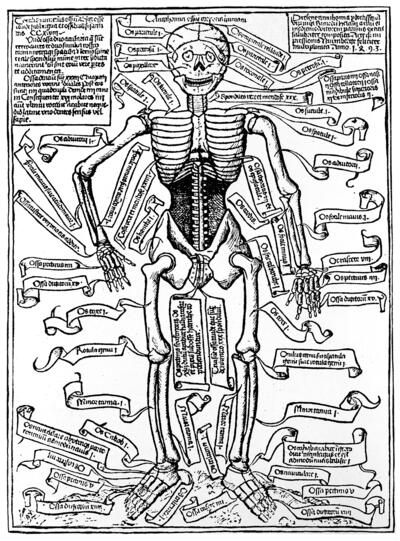UC Berkeley Anthropology Commentary: Exploitation of Human Remains for Educational Purposes Lasted Centuries
 Anatomical skeletal remains have been used in science and medical classrooms around the world for centuries. But students don’t know the names or any information about the individuals, let alone the dark history of their origins.
Anatomical skeletal remains have been used in science and medical classrooms around the world for centuries. But students don’t know the names or any information about the individuals, let alone the dark history of their origins.
A new commentary from UC Berkeley Department of Anthropology Professor and Chair Sabrina Agarwal sheds light on the historic red market trade of human skeletons from India and the ethics of using them for educational purposes.
Published in Nature Communications, the commentary, “The bioethics of skeletal anatomy collections,” delves into the complex history of the procurement of skeletal remains from India and how they became the primary source of anatomical collections around the world.
During and after British colonial rule in India and lasting for 180 years, countless human skeletons were sent from India to various countries for educational purposes, according to the commentary. These skeletons were acquired through questionable means, targeting and exploiting poor and marginalized communities.
"Initially, there was grave robbing to supply skeletons for medical education in Europe," said Professor Agarwal, adding that laws were passed by the British to end this practice and to use the bodies of the unclaimed for medical purposes instead.
However, the demand for bodies continued to outstrip supply, leading the British colonial government to create and export anatomical teaching skeletons from India, a practice that continued until the late 20th century.
"The majority of skeletons in anatomical education globally come from the Indian bone trade," she said, highlighting a legacy of exploitation that began under the British and only ended in 1985 when the Indian government banned the export of human remains. "Medical dissection and the bone trade was an extension of colonial power and control over the bodies of Indians during life and death.”
But Agarwal estimates that millions of these skeletons still exist in classrooms across the world today, continuing to serve as educational tools.
One of the key points in Professor Agarwal's research is that the transformation of these remains into standardized teaching tools took away their individuality. This process made it easier for the trade to flourish and for the skeletons to be accepted in educational settings, without considering their origins or the ethics of how they were obtained.
"These skeletal collections from India were collected and prepared specifically to erase any identity,” she said. “They were physically prepared in gruesome ways to take away all of their dignity and identity."
The commentary calls for a new approach to handling the remains, suggesting that the descendants of South Asian communities should have a say in what happens to these skeletons. Professor Agarwal argues for the development of ethical guidelines for the use of historical anatomical human remains that respect the cultural and religious contexts of the deceased, moving away from the colonial mindset that allowed such practices to thrive.
Reflecting on her personal journey as a South Asian biological anthropologist and how it has shaped her research, Agarwal said she has been driven by a desire to challenge the norm and address the inequalities and injustices involving human communities.
“As a person of color and as a woman in this field, it's always influenced my questions and the types of things that I'm interested in,” she said.
By bringing these issues to the forefront, Professor Agarwal said she is not only advocating for the respectful treatment of the deceased but also encouraging a broader conversation about the ethical responsibilities of institutions and researchers in not only handling human remains, but also educating students on the history of acquisition of anatomical remains that are still being used in classrooms. She said the commentary serves as a reminder of the importance of respecting the dignity and history of all individuals, especially those who have been marginalized and exploited in the name of science and education.
